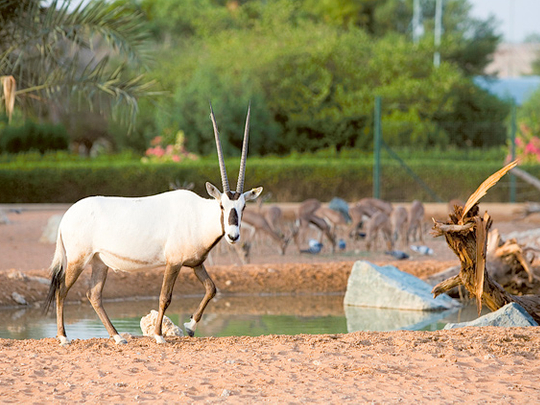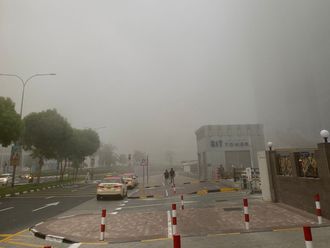
Al Ain: The Arabian oryx conservation programme has been rated as the most successful at Al Ain Zoo for reintroducing more than 5,000 animals in the wild.
The zoo has profiled its conservation and breeding efforts pertaining to this once critically endangered animal, saying it is committed to the conservation of Arabian species.
Highlighting the efforts of Shaikh Zayed Bin Sultan Al Nahyan, the zoo showcases Arabian oryx. The animals attracted Shaikh Zayed’s attention when it was critically endangered in the 1970s, when their number began to decline and reached five to seven individuals in the wild, said Muna Al Daheri, Chief of Conservation and Education at Al Ain Zoo.
Shaikh Zayed had directed his attention towards saving this animal from extinction not only for its natural and environmental presence, but also for its cultural value in the UAE, she said. To fulfil his vision, the zoo adopted several conservation programmes highly focused on captive management and breeding, propagation and reintroduction of endangered species, said Muna.
Al Ain Zoo took part in a reintroduction programme of the Arabian oryx back in 2007 that was implemented by the Environment Agency-Abu Dhabi. It assisted in changing the animal’s classification on the International Union for Conservation of Nature’s (IUCN) Red List of threatened species in a rather exceptional way, from extinct in the wild to near threatened, she said.
“Today, Al Ain Zoo is home to a significant amount of healthy Arabian oryx and was also successful in achieving a gender balance, which is usually difficult to accomplish when breeding the animals in captivity,” she said.
The Arabian oryx is known for its ability to fully adapt to the desert environment and reduce its need for water consumption during the summer. When water is scarce, the Arabian oryx can supply themselves with the water from the dew drops that form on the surface of plants. The Arabian oryx is also known for its identical large horns.
Muna said illegal hunting, urbanisation, and the restriction of the desert areas, plants and shade were the reasons that took the animals near extinction.
Al Ain Zoo is a member of the World Association for Zoo and Aquaria (WAZA) and is actively involved in several internationally coordinated conservation projects, working with other like-minded organisations such as Durrell Wildlife, Jersey, the Environment Agency Abu Dhabi, the Species Survival Commission, San Diego Zoo, the Northern Rangelands Trust of Kenya and the Sahara Conservation Fund.












